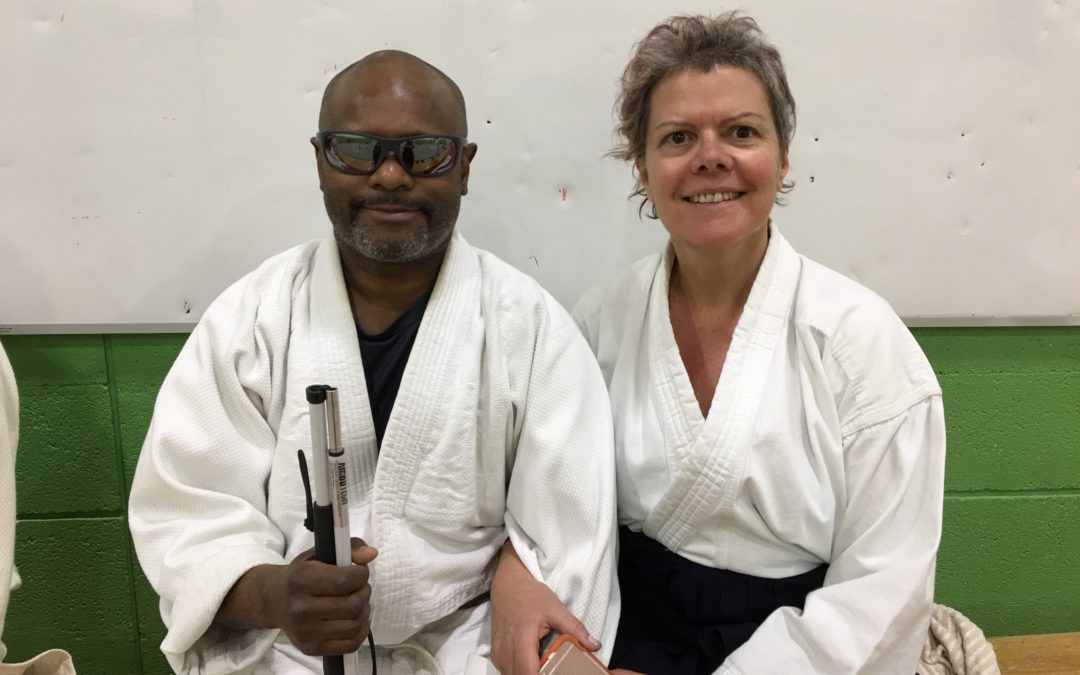Seeing is believing as many would believe but for Delano Brown, believing is not seeing. On an early Sunday afternoon in Montreal Canada in 2016, I met Delano Brown. At the time, Delao was 6th kyu and I watched surprisingly as he was being escorted to the bench after moving so fluidly on the mat. He was a gentle being and introduced himself kindly as being blind.
Delano lost his eyesight in the 1990s. It was a gradual process that stemmed from a pencil injury when he was four. Since then, he had his left eye due to cataracts and then became completely blind. But before then, he saw Aikido on YouTube and was fascinated with the gentle yet powerful martial arts.
After searching for the right dojo, he came across Sensei Kali Hewitt-Blackie’s dojo, Region Park Aikikai. She was patient and provided him guidance. Since aikido involves feeling and blending with your partner, it was the perfect martial arts for Delano. Finding the right teacher makes all the difference.
Kali
I continued to be astounded at how we complain daily about our aches and pains while
So as you read this article, I encourage all of us to stay present and recognize that we should remain grateful and humble at all times. Learn to connect with your partner and learn to feel. You don’t need your sight to believe. Trust your feelings.
Contributor: Charn Pennewaert

